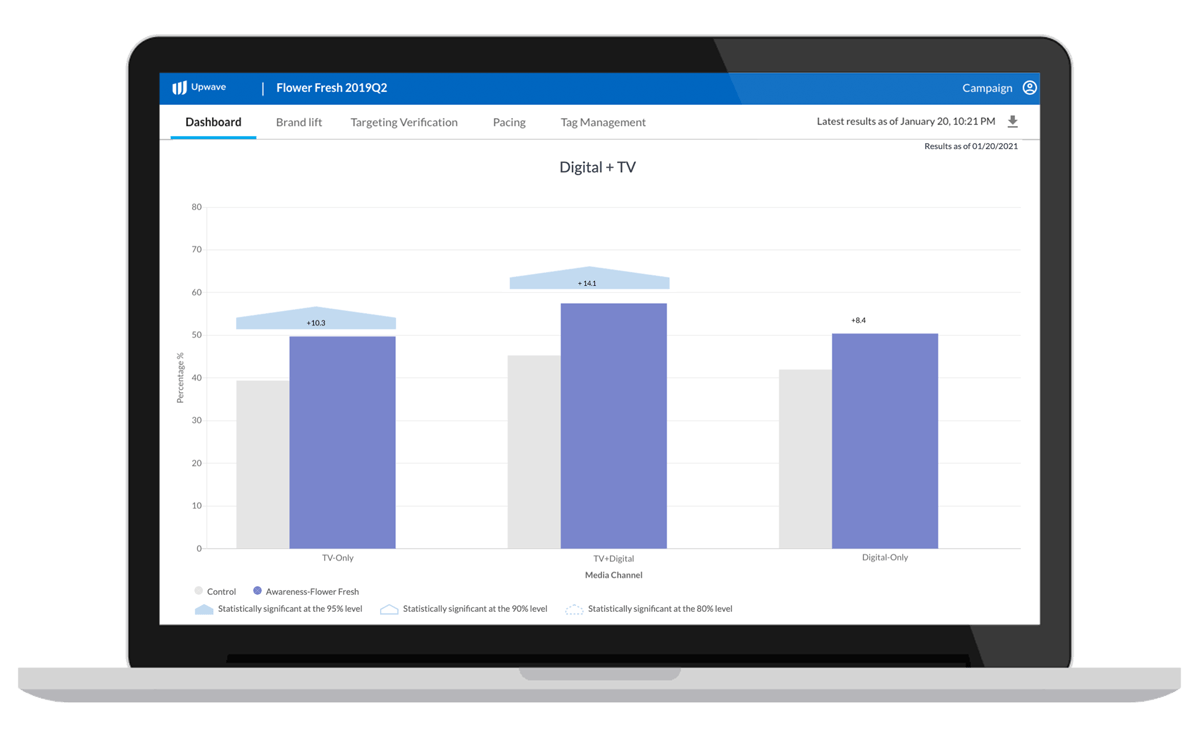Every industry has its table stakes, a minimum offering required to be a serious contender. And in every industry, that minimum offering gets more sophisticated over time. It’s hard to remember now, but there was a time when a cell phone didn’t need a camera to be popular, and when a car could hit the showroom floor without a key fob (let alone a bluetooth system).
The advertising industry is no exception. It was once common to measure ad effectiveness from linear broadcast television and digital channels in isolation. Yet CTV is a channel that, by definition, blurs the distinction between TV and digital. This blurring has made plain the problems with isolating channels and significantly accelerated the need for change. It is no longer meaningful, effective, or even efficient to measure ad effectiveness – whether brand lift or sales lift – as though TV and digital channels are separate. Overlap in exposure makes robust cross-media measurement a requirement now.
Siloed Measurement Is a Legacy Mindset
In what we might call the “flip phone era” of brand lift measurement, the assumption that linear TV ads were ubiquitous and effective permeated the industry. If you take for granted that someone who saw a digital ad would also have seen a linear TV ad and that the linear TV ad dwarfed the power of a digital ad, then why bother with analyzing the performance of each channel relative to one other? With that mindset you could continue to procure linear TV measurement from one source and digital measurement from another.
No longer. Doing the same today would be accepting misleading measurement that fails to deliver a precise and accurate picture of performance.
Let’s say that for your last campaign your TV measurement reports a brand lift of 4% and your digital measurement reports a 6% lift. Without knowing the difference in lift between exposure to one channel versus exposure to both, it’s not really possible to say which performed better. Nor is it possible to identify whether there is synergy, a boost from the interaction of both channels, that calls for more coordination of planning between TV and digital. The importance of this overlap is especially pronounced when a high-impact, short duration TV campaign – say, a Super Bowl commercial – airs in the middle of an ongoing digital campaign. Without contextualizing between channels, you are left with an incomplete view of performance.
And yet, the status quo has brands without a reliable alternative – TV measurement companies lack the ad ops and exchange certifications to measure digital, and digital measurement companies lack truly deterministic data for linear TV measurement. The ascendancy of CTV has made it clear that brands need a more forward-thinking, comprehensive cross-media measurement solution – but what should that look like?
Cross-Media Measurement Must-Haves
There are essential ingredients to check for in order to make sure you’re getting a comprehensive view of brand lift performance from your measurement provider.
- Deterministic Exposure Data: When historically digital-first reporting platforms claim to deliver TV exposure data, it typically relies on a problematic Opportunity to See (OTS) methodology. In order to accurately capture cross-media exposure, the data must be built on a deterministic exposure data available from Smart TV manufacturers.
- Mid-flight Reporting: Traditional linear TV measurement services rely on research panels and are only able to report out cross-media performance after a campaign has ended, at which point it is too late to optimize either channel. Brands should expect cross-media cuts updated daily.
- Unified Dashboard: An obvious but rarely-met requirement is to access cross-media measurement data in a dashboard that enables brand lift performance analysis both between channels and across channels. Legacy research services segregate TV and cross-media reporting into post-campaign deliverables, while digital measurement lives in a dashboard.
As the rise of CTV makes cross-media measurement at once more complicated and more essential, brands shouldn’t have to make do with disparate data sets and post-campaign reports. Just like we expect the latest smartphone to be faster, better, and, well, smarter, brands should expect the same from their measurement partner.
Upwave continuously raises the table stakes by leveraging unprecedented data scale and cutting-edge software to deliver real-time, deterministic brand lift KPIs across Linear, Addressable, CTV, and Digital on one on-demand dashboard. Learn more by setting up a product demo with our team here.

